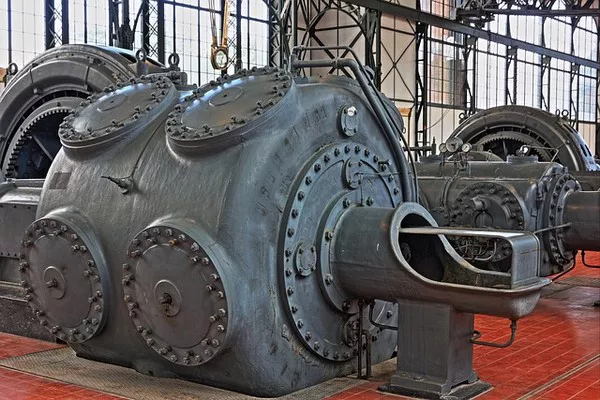Faulty electrical equipment poses significant risks to both property and human life. Electrical malfunctions, whether due to wear and tear, manufacturing defects, or improper installation, can lead to fires, electrical shocks, and other hazardous situations. To ensure safety and promote efficiency, it is crucial to understand what faulty electrical equipment entails, its common causes, and the importance of regular maintenance and inspections. In this article, we will explore the concept of faulty electrical equipment and the measures necessary to mitigate potential hazards.
Understanding Faulty Electrical Equipment
Faulty electrical equipment refers to any electrical devices, appliances, or components that exhibit malfunctions or defects, making them unsafe for use. These faults can manifest in various ways, including overheating, sparking, electrical shorts, and irregular power consumption. Such issues may result from factors such as aging, inadequate maintenance, improper handling, or manufacturing defects.
Faulty electrical equipment can exist in residential, commercial, and industrial settings. It includes a wide range of devices, such as electrical appliances, power tools, circuit breakers, wiring, outlets, and more. Detecting and addressing these faults promptly is essential to prevent accidents and maintain a safe working environment.
Common Causes of Faulty Electrical Equipment
Understanding the common causes of faulty electrical equipment is instrumental in taking preventive measures. Some of the key reasons include:
a. Aging and Wear: Over time, electrical equipment can deteriorate due to aging and regular use. Worn-out components and connections increase the risk of faults and may lead to electrical fires or breakdowns.
b. Lack of Maintenance: Regular maintenance is vital to identify and address potential issues with electrical equipment. Neglecting maintenance routines can exacerbate existing faults and create new ones, putting occupants at risk.
c. Electrical Overload: Overloading electrical circuits by connecting too many devices to a single outlet or circuit can cause overheating and electrical fires.
d. Poor Installation: Incorrect installation of electrical equipment can lead to loose connections, improper grounding, and other safety hazards.
e. Manufacturing Defects: Occasionally, electrical equipment may have inherent manufacturing defects that can cause failures and pose safety risks.
f. Environmental Factors: Exposure to moisture, extreme temperatures, and harsh environmental conditions can lead to corrosion and damage electrical components.
g. DIY Repairs: Attempting to repair or modify electrical equipment without proper knowledge and expertise can lead to unsafe conditions.
The Importance of Regular Maintenance
Regular maintenance of electrical equipment is essential to ensure optimal functionality and safety. Some key benefits of routine maintenance include:
a. Hazard Prevention: Regular inspections and maintenance help identify potential faults and safety hazards before they escalate.
b. Energy Efficiency: Well-maintained electrical equipment operates more efficiently, reducing energy consumption and lowering utility costs.
c. Prolonged Lifespan: Proper maintenance extends the lifespan of electrical equipment, maximizing the return on investment.
d. Compliance with Standards: Regular maintenance helps ensure that electrical equipment meets safety standards and regulations.
e. Reduced Downtime: Timely maintenance minimizes unexpected breakdowns, reducing downtime and enhancing productivity.
Signs of Faulty Electrical Equipment
Identifying signs of faulty electrical equipment is crucial for early intervention and risk mitigation. Some common indicators include:
a. Frequent Circuit Breaker Tripping: If circuit breakers trip frequently or fuses blow frequently, it may be due to overloaded circuits or faulty equipment.
b. Dimming or Flickering Lights: Flickering or dimming lights may be a sign of faulty wiring or loose connections.
c. Unusual Sounds or Smells: Strange noises or burning smells near electrical equipment can indicate electrical malfunctions.
d. Hot Outlets or Switches: Outlets or switches that feel hot to the touch may indicate faulty wiring or an overload.
e. Visible Damage: Cracked, damaged, or discolored electrical equipment should be inspected and replaced promptly.
f. Electrical Shocks: Experiencing mild shocks or tingling sensations when touching electrical equipment may indicate grounding issues or faulty wiring.
g. Abnormal Power Consumption: A sudden increase in energy consumption without a noticeable change in usage patterns may indicate faulty equipment.
Mitigating Risks and Ensuring Safety
To mitigate risks associated with faulty electrical equipment and promote safety, consider the following measures:
a. Regular Inspections: Schedule periodic inspections by qualified electricians to assess the condition of electrical equipment.
b. Compliance with Safety Standards: Ensure that all electrical equipment meets safety standards and is appropriately rated for its intended use.
c. Unplug Unused Equipment: Unplug electrical devices and equipment when not in use to reduce the risk of electrical malfunctions.
d. Avoid Overloading Circuits: Avoid connecting too many devices to a single circuit or outlet to prevent overloads.
e. Proper Installation: Have electrical equipment installed by qualified professionals to ensure safety and compliance.
f. Address Faults Promptly: If you notice any signs of faulty electrical equipment, discontinue use immediately and seek professional assistance.
g. Educate Occupants: Educate individuals using electrical equipment about safety practices and potential hazards.
Conclusion
Faulty electrical equipment poses significant risks to property and human life, making it imperative to identify potential faults and address them promptly. Understanding the common causes of electrical malfunctions and the importance of regular maintenance and inspections is crucial for ensuring safety and efficiency in residential, commercial, and industrial settings.
By adopting preventive measures and promptly addressing issues, individuals can protect themselves and their assets from potential electrical hazards. Remember, electrical safety is everyone’s responsibility, and a proactive approach to faulty electrical equipment is the key to a safe and secure electrical environment.

